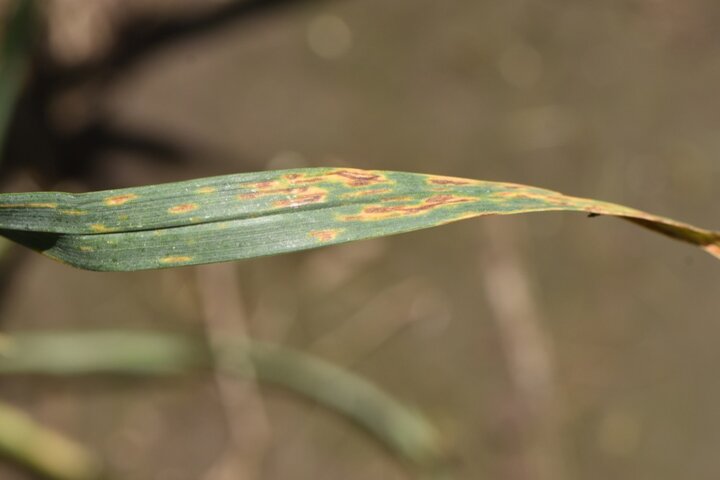As of June 10, diseases in Nebraska wheat fields remained at trace to low levels. Stripe rust (Figure 1) was detected in a grower’s field in southeast Nebraska (Thayer County) on May 27, but hot and dry weather prevented its development. Leaf rust (Figure 2) and Fusarium head blight (Figure 3) were detected at Havelock Farm in Lincoln (Lancaster County) on June 8, but not in growers’ fields surveyed on June 10 in south central and southeast Nebraska. Septoria tritici blotch (Figure 4) is present at low to moderate levels in some fields, but it is confined to the lower leaves and its development has been slowed down by hot and dry conditions. Wheat growth stage ranges from full heading (Feekes 10.5) in the northern Panhandle to dough development (Feekes 14-15) in the southeast.




Management
Most wheat fields are past the growth stage when a fungicide can be applied. If a fungicide was applied earlier to protect the flag leaf from foliar diseases or the head from Fusarium head blight, that earlier spray will be sufficient to minimize the impact of leaf rust which is favored by warm temperatures. Stripe rust, which is favored by cool temperatures, is not expected to develop to damaging levels because it arrived too late and its development has been arrested or slowed down by hot and dry conditions.

